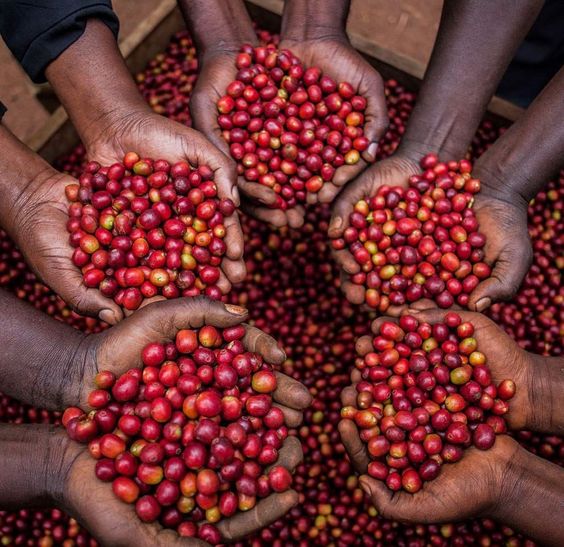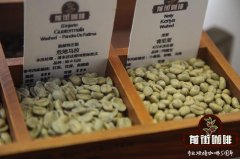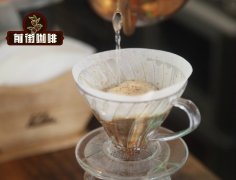Anaerobic Solar treatment of Coffee beans in Donkey Manor in Panama
How did a great cup of coffee, which is delicious, rich in layers, clear in acidity, full-bodied taste, repeatedly won awards in Best of Panama and broke cup testing records, be created?
You may need a very good variety of coffee beans, you may need a piece of land and climate suitable for the growth of boutique coffee, but more importantly, the people who make it all beautiful-the Lamastus family.
Retired US troops grow coffee
Robert Lamastus, a former soldier in Kentucky, founded the Lamastus Family Manor Group with his Panamanian wife Elida in 1918. All the way up to now, it has three different coffee estates: Elida, El Burro and Luito. Donkey Manor is one of the most extreme climatic conditions, which can produce coffee beans with unique flavor.

Volcanic soil and high altitude make delicious coffee.
Friends who believe that coffee lovers have heard coffee beans say countless times about the altitude of their origin, such as 1200 meters, 1400 meters, 1700 meters, and so on, while Donkey Manor is located in the Balu volcano area of Bogut, taking off at an altitude of 1800 meters. Only a very small number of coffee beans more than 2000 meters can compete with it, and it will be difficult to grow coffee any higher.
Coffee trees belong to tropical plants and are suitable for growing at low latitudes, but the higher altitude at low latitudes can delay the growth of coffee trees. The harsh environment allows coffee trees to try their best to keep all the nutrients in the fruit, so that coffee beans have more sugar and protein, which can bake and brew more delicious coffee.
Donkey Manor's high altitude and low temperature at night can even make coffee cherries mature a month later, and thanks to the rich bacteria brought by the local primeval forest soil, coffee cherries get more nutrients!
When it comes to forest soil, we have to talk about what kind of soil is best for coffee trees, and that is volcanic soil.
Do you know? From Africa to South America to Asia, most boutique coffee producing areas are in or near volcanic areas! Because volcanic soil is rich in potassium, sodium, magnesium, iron, sulfur, phosphorus and many trace elements, it can make the soil more fertile! The three estates of the Lamastus Family Manor Group are all in the Baru volcano area, where fat coffee cherries are grown!

Coffee beans and treatment of Donkey Manor in Panama
With such a unique planting environment, the donkey farm also chooses a variety of coffee carefully. The coffee beans produced by the donkey manor are Catuai (sometimes called Kadui) and Geisha, of which geisha is the star species that has attracted people's attention in recent years, sweeping many awards and asking Panama to hold a separate competition for it, not to abuse other coffee beans.
However, with good climate, altitude, soil and coffee bean varieties, we still need the last piece of jigsaw puzzle: good coffee bean treatment!
The Lamastus family developed a unique anaerobic sun treatment in which ripe coffee cherries were fermented in airtight steel drums for 5 days so that the fermented pulp could enter the beans, and then dried in the sun for 35 days to develop a strong flavor of fruit and flowers. Finally, the peel and pulp were removed by a sheller to obtain coffee beans. The whole process of pulp, pectin layer and coffee beans contact for 40 days, will develop a strong floral, fruity, sour, fermented taste just right, not too much too little, combining the advantages of anaerobic and sun exposure!
Speaking of which, you know how powerful the geisha coffee beans are in the anaerobic sun of Donkey Manor! Also know that the Lamastus family is multi-minded in their coffee farm in order to sweep many BoP awards!
Important Notice :
前街咖啡 FrontStreet Coffee has moved to new addredd:
FrontStreet Coffee Address: 315,Donghua East Road,GuangZhou
Tel:020 38364473
- Prev

Why is the harvest time of coffee so long? Which method is better, manual picking or mechanical harvesting?
How is the coffee harvested? Coffee is processed in different ways. From seeds to cups, there are countless decisions and different ways of doing things. Only through careful experiments and research can coffee realize its true potential. Coffee picking is the first step for ripe cherries to enter our cup. There are two ways to use them. Selective harvest is to pick mature coffee cherries only by hand.
- Next

Introduction to the Environmental characteristics of Manors in Bolivian Coffee producing areas description of the flavor and taste of Bolivian coffee beans
Bolivia's geographical environment and coffee farm Bolivia has a tropical climate and high altitude, coffee producing areas concentrated in more than 1400 meters above sea level, can produce a lot of delicious coffee. Most of them grow iron pickup trucks (Typica) and Kaddura (Caturra), some of them
Related
- Beginners will see the "Coffee pull flower" guide!
- What is the difference between ice blog purified milk and ordinary milk coffee?
- Why is the Philippines the largest producer of crops in Liberia?
- For coffee extraction, should the fine powder be retained?
- How does extracted espresso fill pressed powder? How much strength does it take to press the powder?
- How to make jasmine cold extract coffee? Is the jasmine + latte good?
- Will this little toy really make the coffee taste better? How does Lily Drip affect coffee extraction?
- Will the action of slapping the filter cup also affect coffee extraction?
- What's the difference between powder-to-water ratio and powder-to-liquid ratio?
- What is the Ethiopian local species? What does it have to do with Heirloom native species?

